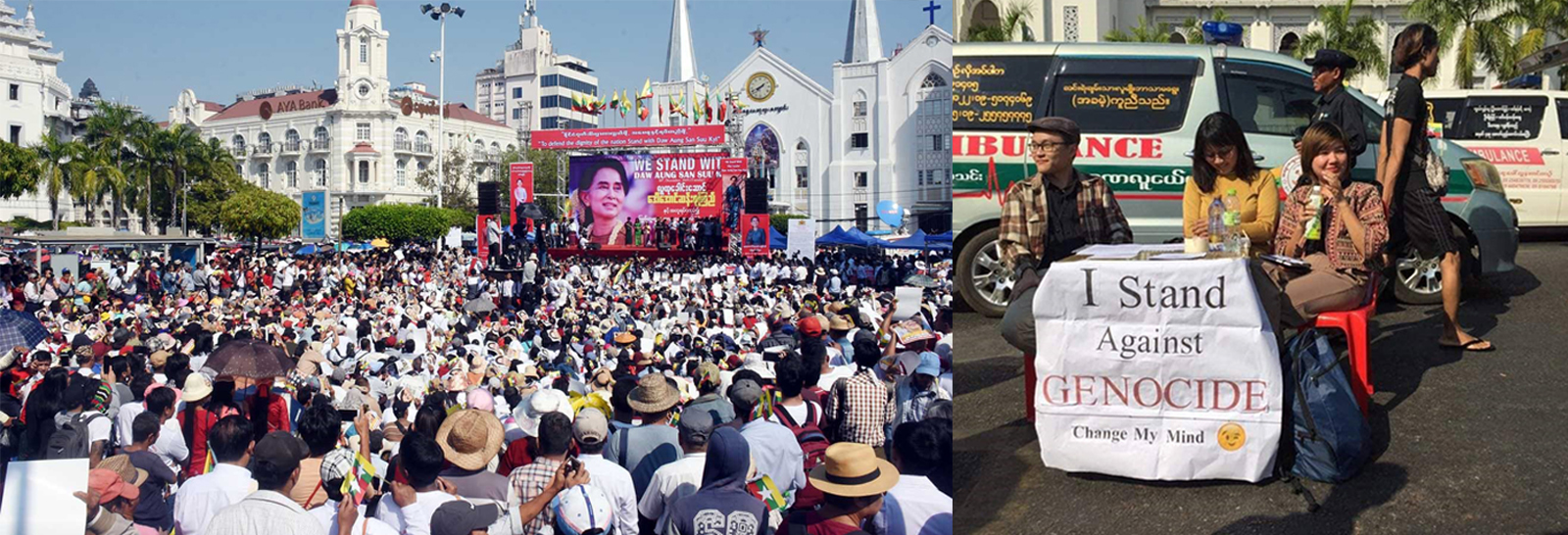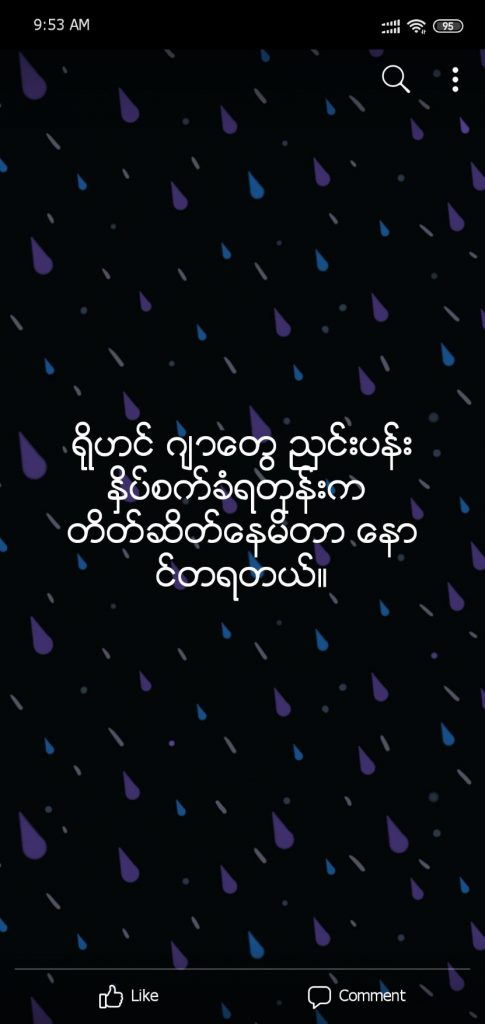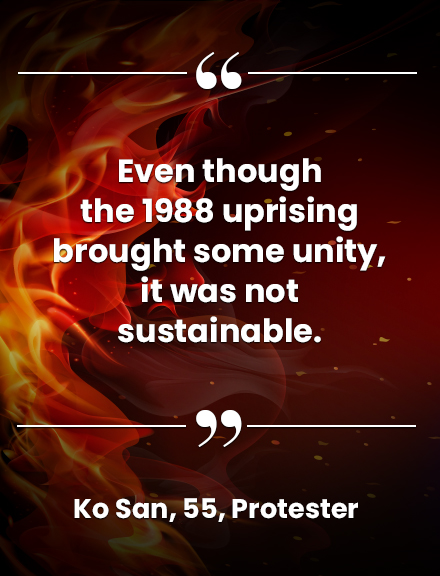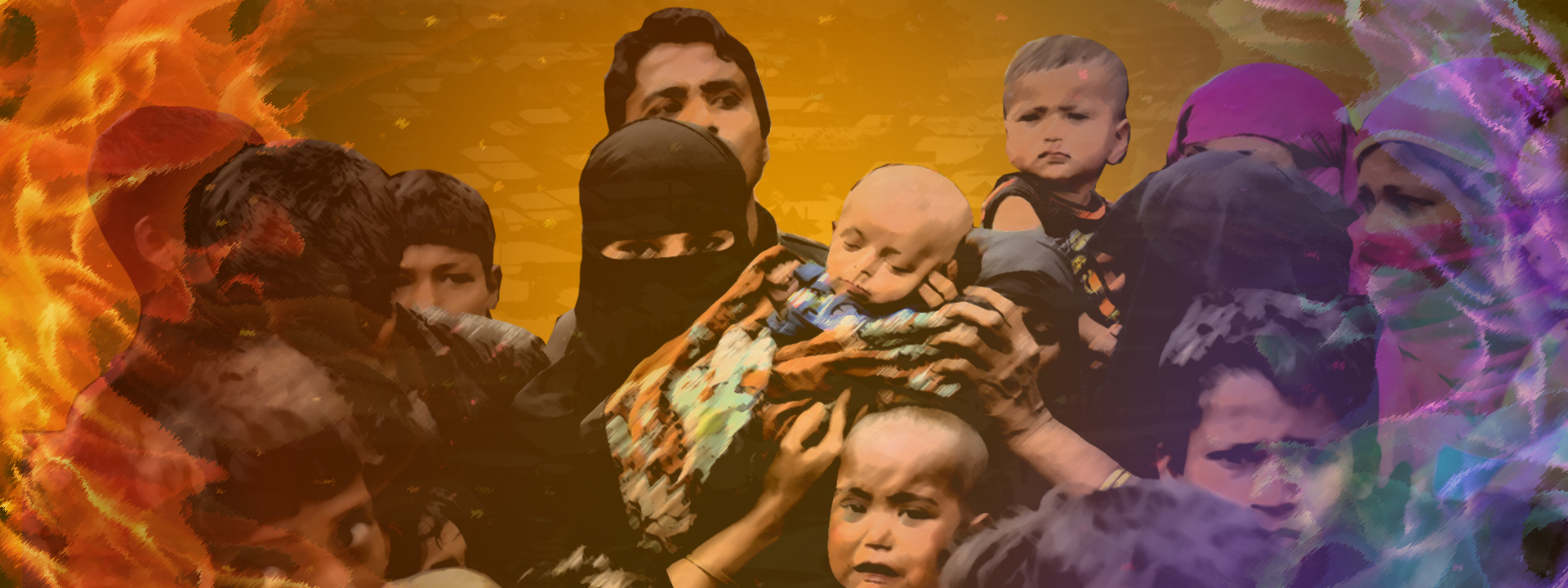Protests have been raging across Myanmar since the military junta ousted the duly elected civilian government from power in early February. Their goal: to restore democracy in the Southeast Asian country.
Under the banner of the Civil Disobedience Movement, millions of Burmese have been standing up against the junta while the prospects of civil war loom large in the horizon. Young people are among the most prominent figures of the movement, but the crowds are impressively diverse, and people from all walks of life, of all ages, and of all ethnic backgrounds have united for one cause.
Before long, however, the armed forces turned their armaments against the citizenry, determined to keep power through whatever means necessary. Myanmar’s Spring Revolution soon turned bloody.
Amid the steady escalation of a brutal crackdown by the Tatmadaw, or the military, on the protesters, and even as the internet was jammed, desperate calls for help to the international community have reverberated through social media. In the meantime, dead bodies continue to pile up while scores of people are fleeing to neighboring countries seeking refuge.

December 2019. A huge crowd forms on the streets of Yangon, in a massive show of support for Daw Aung San Suu Kyi, ahead of her trial at the International Court of Justice for the state-sponsored terrorism against the Rohingya (left). In comparison, a counter-protest seeking to raise awareness of the plight of the Rohingya, is deserted (right).
Painful realization
Who knew that the people of Myanmar would soon be met with another rude awakening, one that forces them to reckon with their collective history of political apathy and lethargy? And one that perhaps holds promise for a better future for Myanmar, however bleak it may look at the moment.
For way too long, the Burmese were willfully blind to the state-sponsored violence and abuse against the Rohingya. Many of them were even doubtful that there were actually Rohingya in Myanmar, believing they were Bengali.

So, when the crosshairs of the military were finally turned on them, the realization came with such a painful shock. If the armed forces could deploy this much violence against peaceful protests, then the allegations regarding the Rohingya must have been true.
“Now we’ve seen how brutal and violent the military is with our own eyes,” said Thu Naung, 20, a student from Yangon. “They are quite inhumane and attack unarmed civilians as their own enemies.”
“At that time, the only thought that came to my mind was: ‘they did the same thing to the Rohingya and ethnic people, and this is why ethnic people hate the military so much.’”
Much of Myanmar’s awakening would also come from the internet, especially for its youth.
As soon as the military seized the seat of power, citizens started storming social media, starting an online protest against the coup and drumming up support by commenting on viral posts, hoping to capitalize on their engagements, gaining second-hand exposure.
They were caught off-guard, though, when their comments were met with reproach from the international community, who pointed out that the Burmese were once party to the oppression they were bemoaning now. It was ironic that after years of being silent on the Rohingya, they now wanted the rest of the world to speak up for them.
These responses made many in Myanmar realize just how wrong they had been about the Rohingya.
“Getting unexpected and unwanted response from international people when we asked for help on social media made us think of changing our perception towards the Rohingya community and other marginalized groups,” said Ye Lwin, 22, a student from Yangon.
Young people in Myanmar are pretty open to being corrected, and brave to admit that they were wrong. In response to the online backlash, many of them started posting about how they regretted how ethnic minorities were treated in the past, and how they remained indifferent over it.
Some even took their penance to the streets, showing up at protests with sign boards expressing their regret over the Rohingya abuses.
“We are very sorry for the losses of all the marginalized groups in Myanmar, including the Rohingya,” said Shin Thu, a young protester from Yangon. “We were brainwashed with an information black-out, and grew up with stories that made us afraid of people of different religions and ethnicities.”
“I really regret being silent in the past and feel ashamed of calling for speaking up only now that it’s us who needs help.”
More inclusive
Of course, not everyone is on the same page. Despite the impressive change-of-heart among the youth, the older generation in Myanmar remain stubborn, stuck with their mistaken, often harmful, views about minorities.
 Htet Naing, a 24-year-old post-graduate student says: “Elder people seem less ready to change their perception about minorities, as they don’t have much access to real news and true information like young people. They always fall for the fake news.”
Htet Naing, a 24-year-old post-graduate student says: “Elder people seem less ready to change their perception about minorities, as they don’t have much access to real news and true information like young people. They always fall for the fake news.”
Nevertheless, genuine change seems to be on the horizon. The protests have brought together what used to be a divided society, all to achieve a common goal. People from all sectors – of all ethnicities, gender identities, religions – have all joined the cause. Unlike the democracy movement in 1988, today’s protests seem more open, more accepting of everyone.
“In 1988, there was no flow of information like in 2021, and only a few people had access to international networks of information and truth,” said Ko San, 55. He had helped fight for Myanmar’s democracy once, and he is ready to do it again. But now, he says he sees more promise.
“Even though the 1988 uprising brought some unity, it was not sustainable,” he said. “With the inclusion of women and the LGBT+, the 2021 protests are more creative and inclusive than what we had in 1988.”Another older protester, a 51-year-old man who requested anonymity for security reasons, agrees: “Today, Generation Z are smarter than us. They are braver, more united, and more strategic. With the help of technology, information, and language skills, they can let the world know what is happening in Myanmar.”●
Jesua Lynn is a young independent researcher and peace-education trainer. He has been working in youth development, peace-education and reconciliation for more than four years. He authored and co-authored more than four publications in Myanmar in the fields of human rights, hate speech, youth activism and peace-buildings.
*Editor’s note: In order to protect their safety, the names of protesters used in the story are their short names, which they have agreed to be published. The photos were sourced from social media, where they are commonly circulated. We are withholding the identities of the uploaders for security reasons.



















